NVIDIA Tegra Note 7 Review
by Brian Klug on November 12, 2013 9:01 AM EST- Posted in
- Tablets
- Mobile
- Tegra 4
- NVIDIA
- Tegra Note
Performance
Obviously the highlight from NVIDIA’s perspective is the Tegra 4 SoC inside Tegra Tab, which in this case is clocked at a maximum single-core CPU frequency of 1.8 GHz. This is just short of the 1.9 GHz max single CPU clock in Shield. Of course Tegra Tab lacks the benefit of the active cooling system Shield has and has an accordingly lower TDP.
After reviewing and investigating Shield I discovered a bit more about the different tiers or bins of Tegra 4 SoCs available to OEMs, which are binned into a few SKUs and capped with different maximum currents. I did a bit of digging, and the SoC inside Tegra Tab is T40S (as opposed to the T40X inside Shield, although the real name is T114).
The specific breakdown is that the SoC is a SKU 5 part, and has the 6 A current cap in place, or 8 watts. In addition to the CPU clock frequency differences I touched on, the GPU inside also sees its clocks go down a bit from the 672 MHz in Shield, to 600 MHz inside Tegra Tab, for a roughly 12 percent theoretical performance difference in GPU compute power.
We covered most of the performance breakdown with Tegra 4 in the NVIDIA Shield review, and at this point Tegra 4 is pretty well understood. That said I still ran the tablet through our usual set of tablet benchmarks to see how the device fares given the theoretical performance offset from Shield.
CPU Performance
We start with our CPU related benchmarks which consist of a mix of JS benchmarks and a few others.
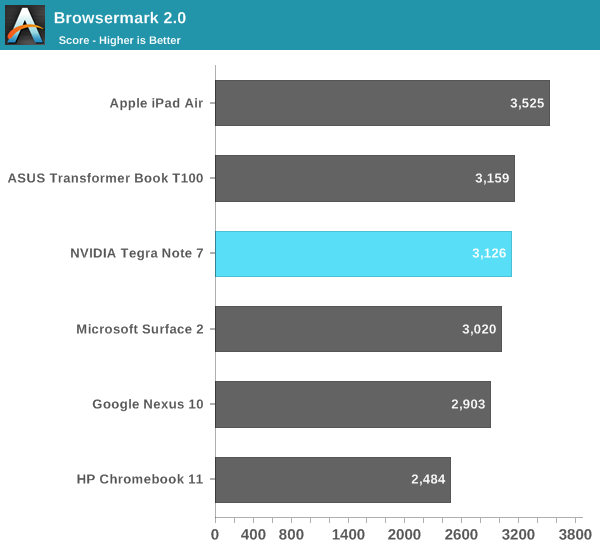
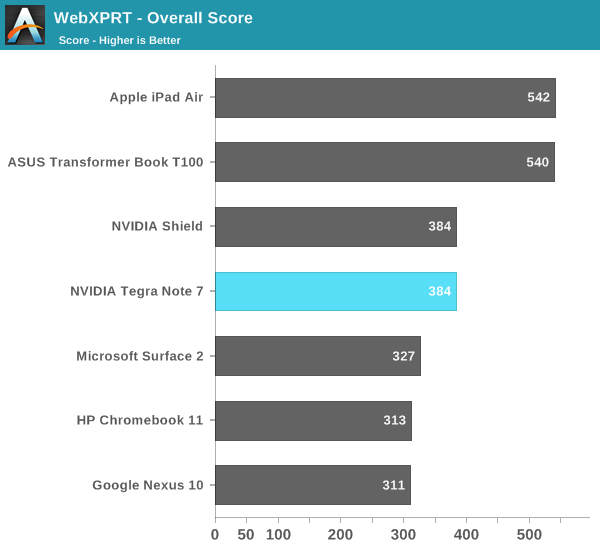
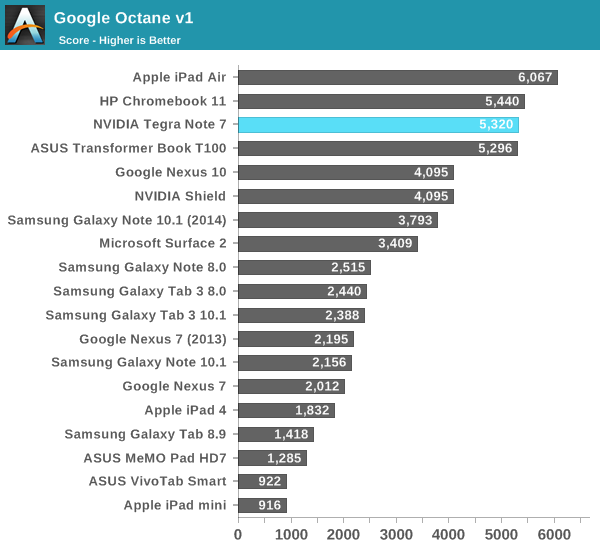
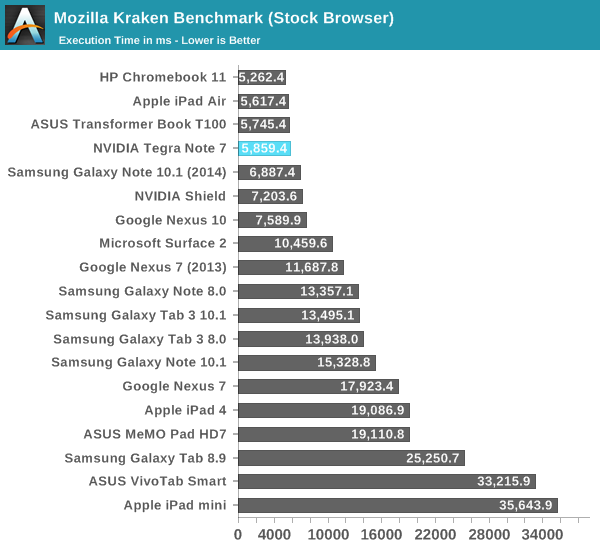
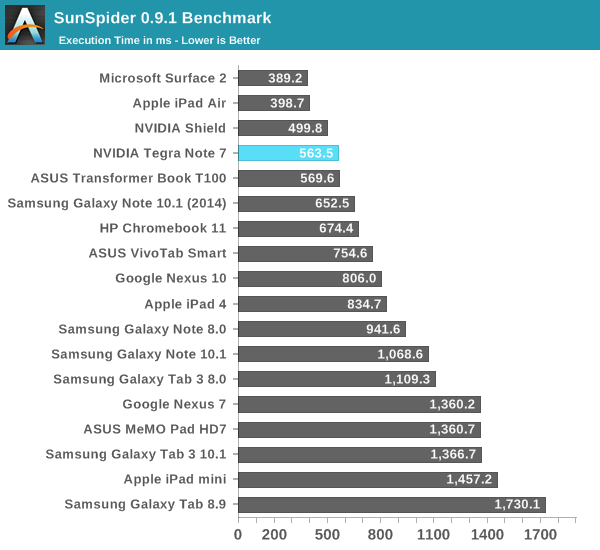
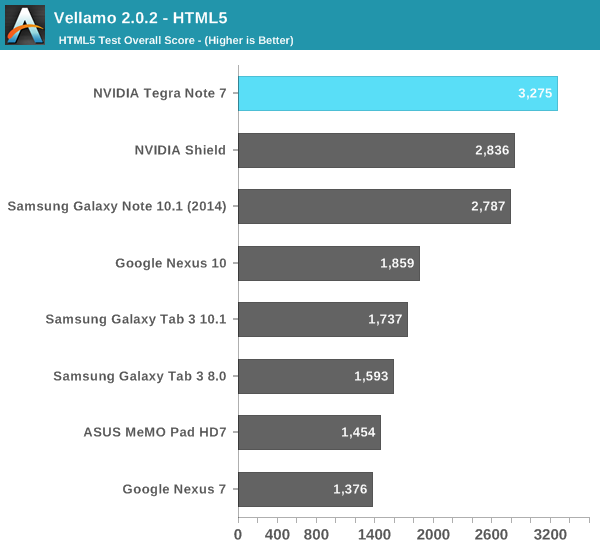
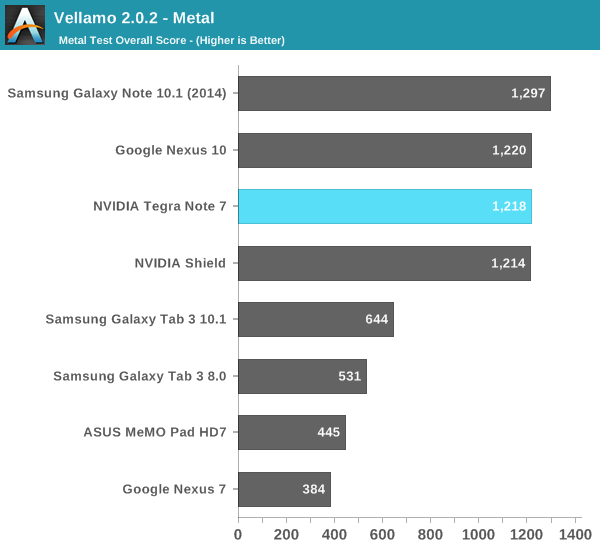
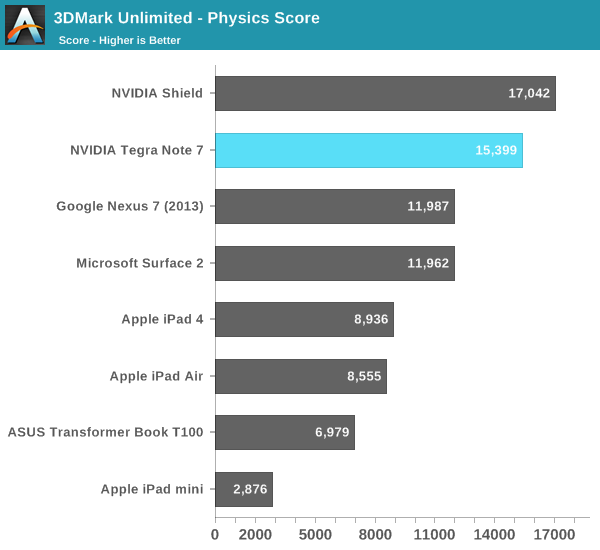
I only included sunspider 0.9.1 since oddly enough the Tegra Note gives not a number (NAN) results for a few subtests when running sunspider 1.0 both in Chrome and the stock browser. I recollect seeing this intermittently on a few devices in the past, but couldn’t get a score to generate despite repeated runs and reboots. The rest of the web benchmarks actually have crept up since we looked at Shield, which is my comparison point. There’s no doubt that 4 Cortex A15s with a 1.8 GHz maximum makes for a very speedy device, and the Tegra Note performs very well in essentially all the CPU bound tests.
GPU Performance
On the graphics side we turn to the usual assortment of 3Dmark, Basemark X, and GFXBench (formerly GLBenchmark 2.7) for comparing performance. Just to reiterate from the Shield review, the GPU performance story in Tegra 4 really changed versus Tegra 3, with enough die area dedicated to GPU to make it competitive with the best in the space. We turn to a mix of onscreen (remember that Tegra Note’s display is 1280x800) and offscreen (1080p) tests. 3DMark Unlimited is a new mode in that benchmark which we don’t have many scores from, but it allows for better resolution-independent testing thanks to a better offscreen mode. We have a smattering of scores from the normal and Extreme modes, but not everything because 3DMark now shows "Maxed Out" for these results that are at vsync.
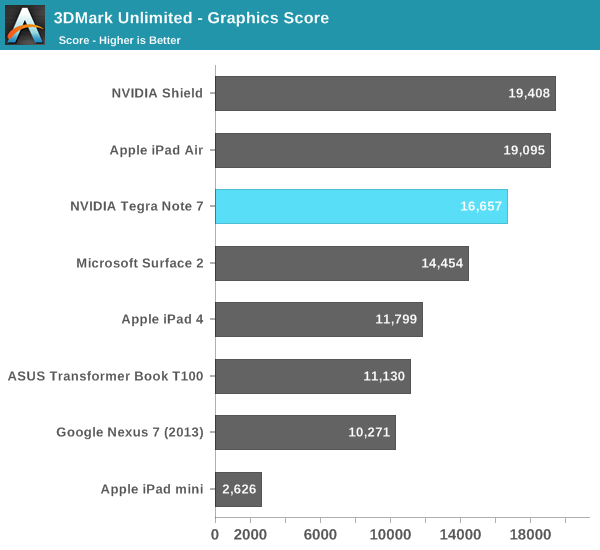
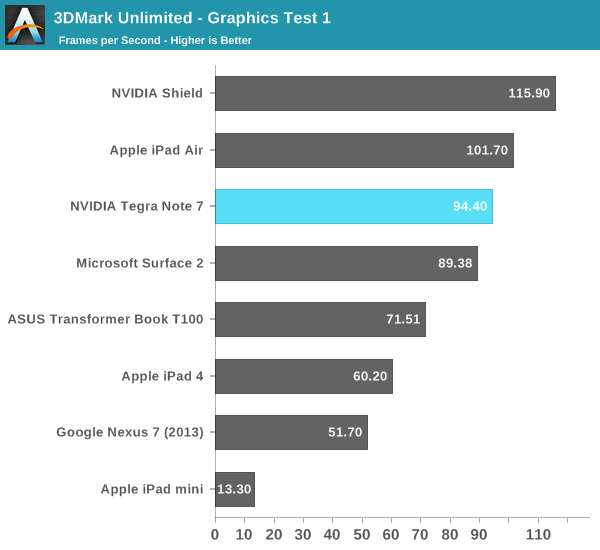
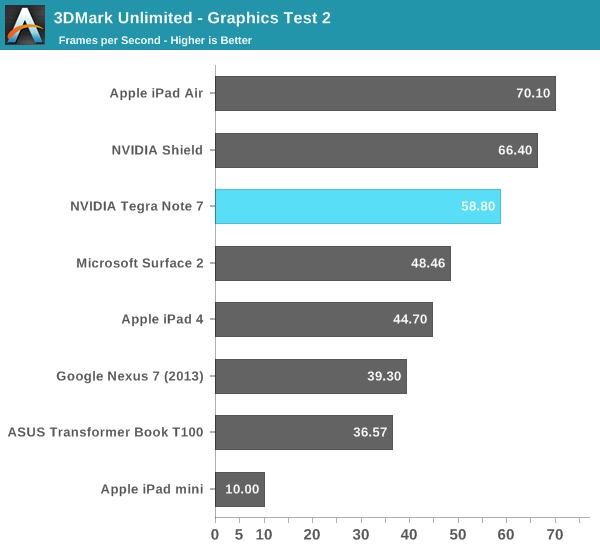
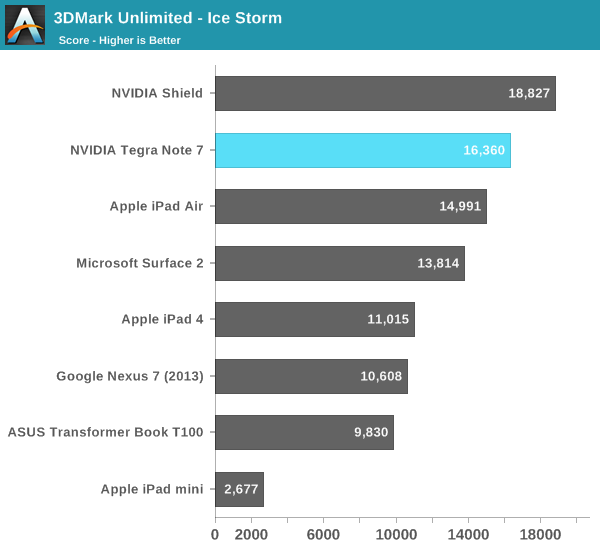
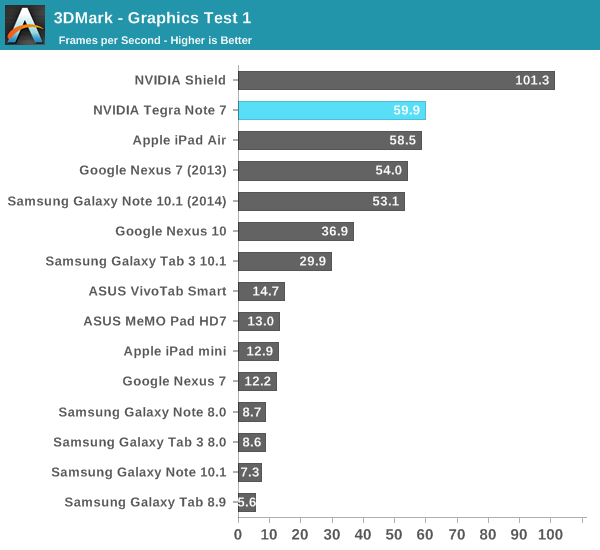
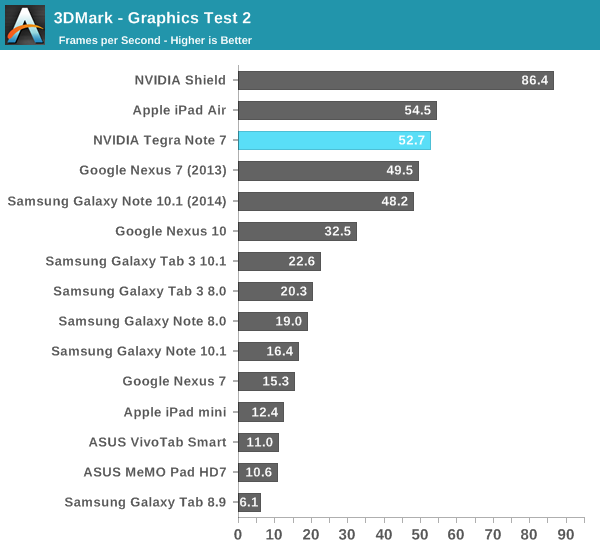
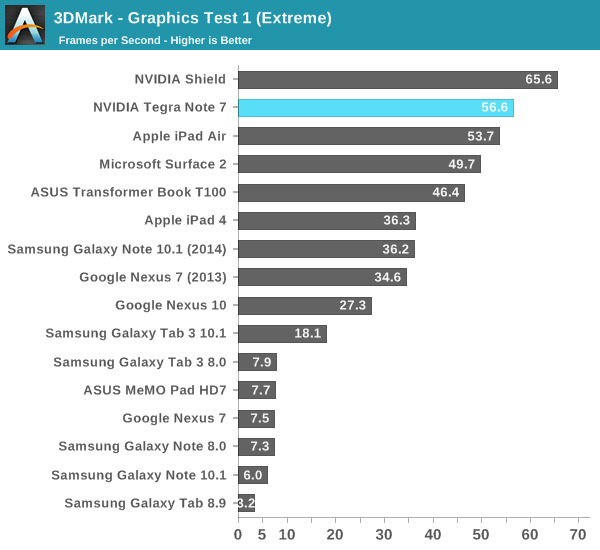
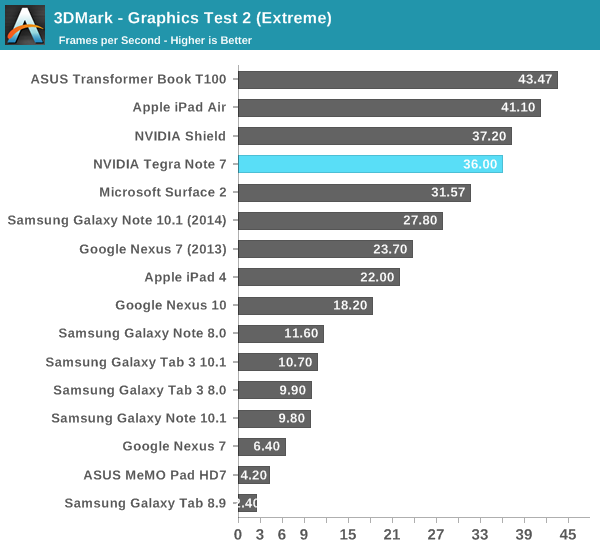
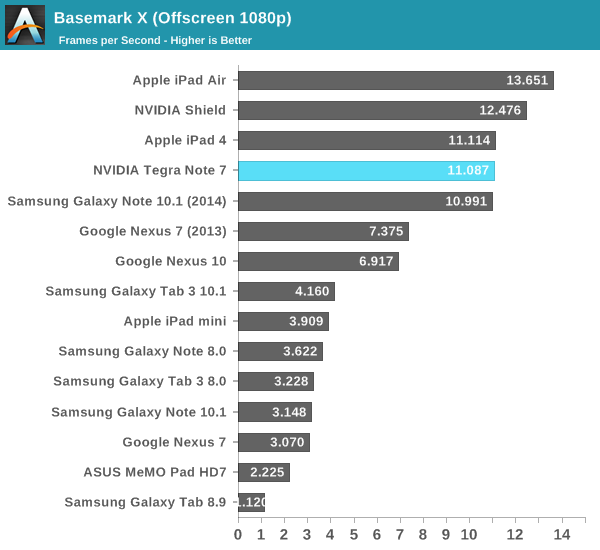
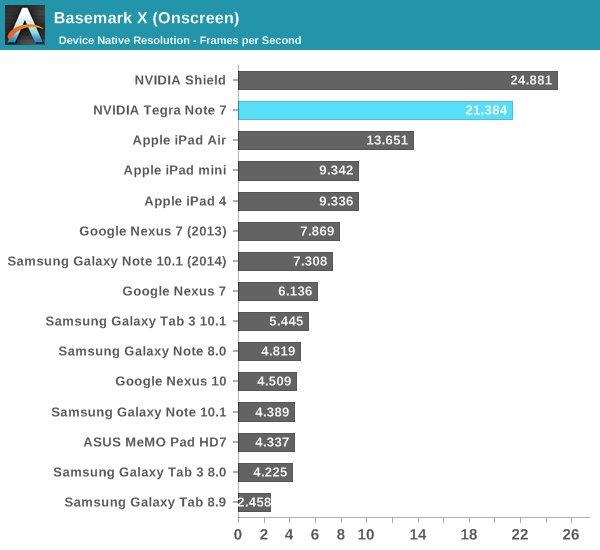
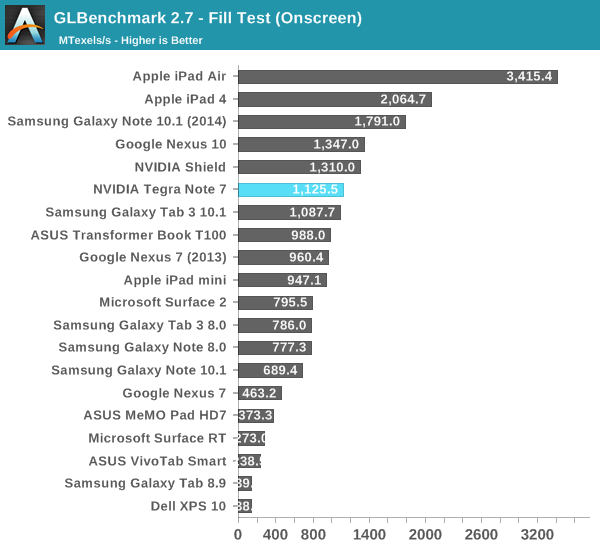


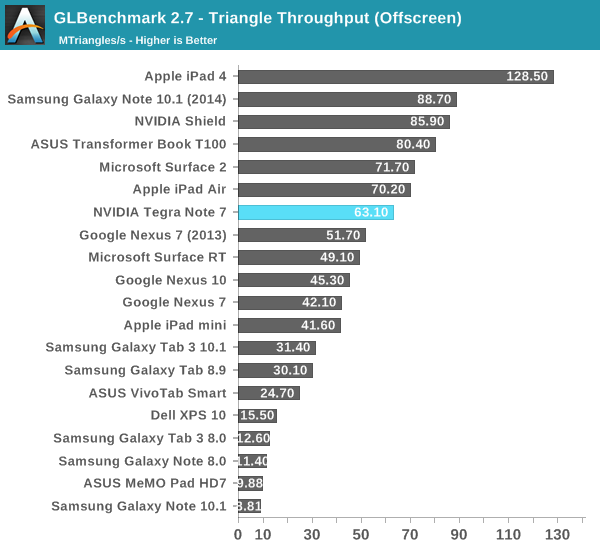
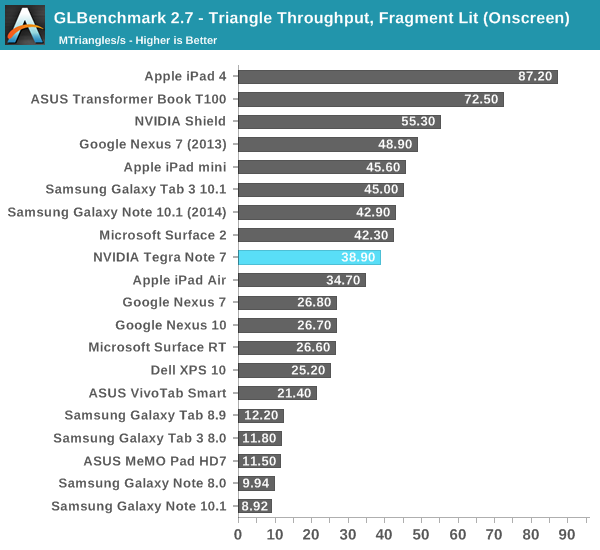
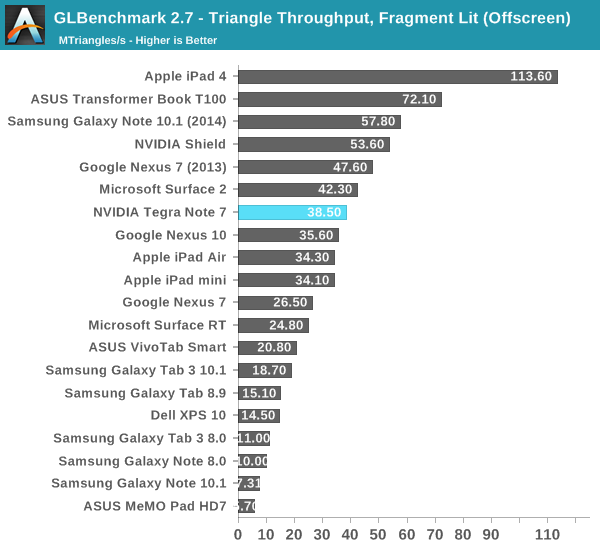
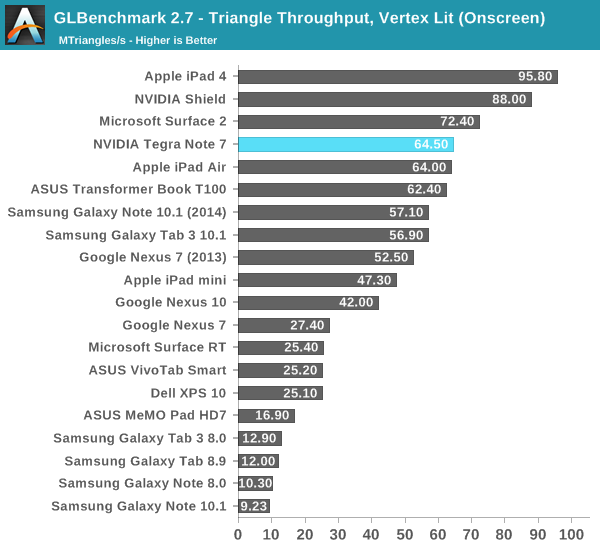
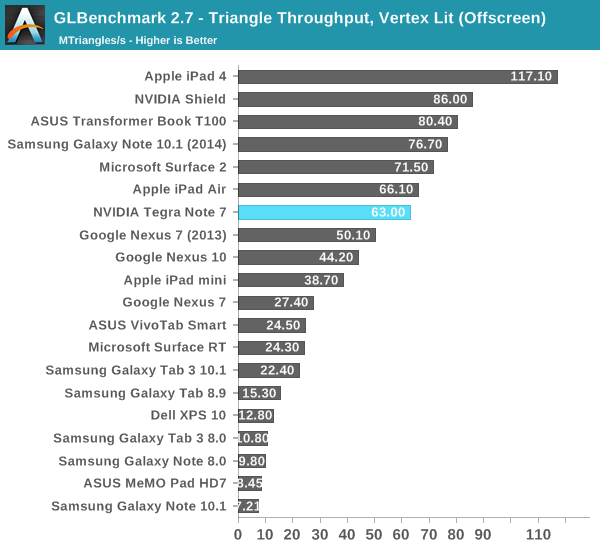

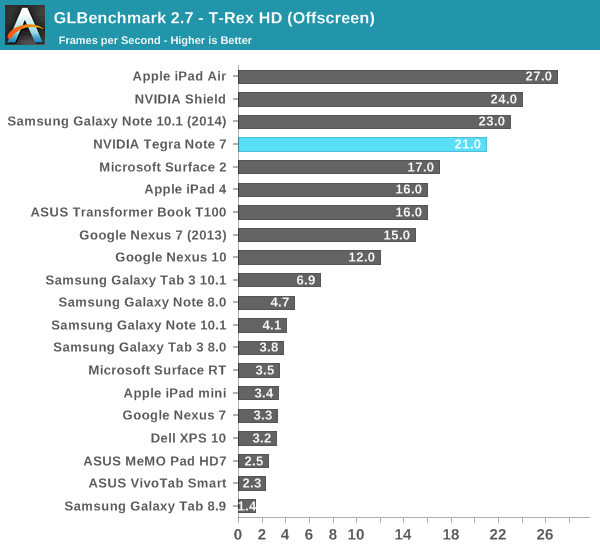
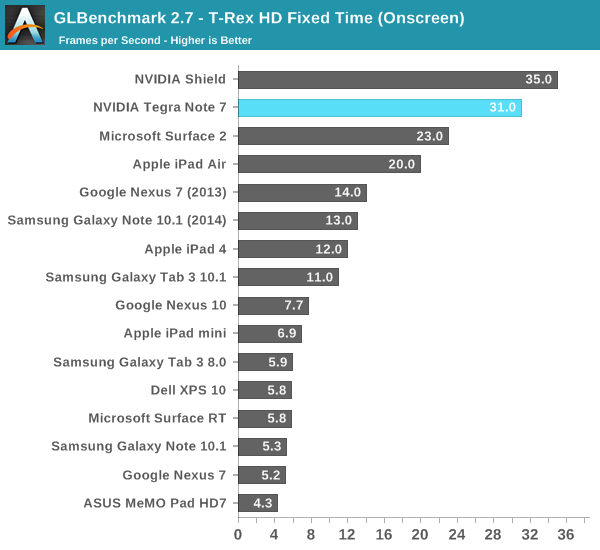
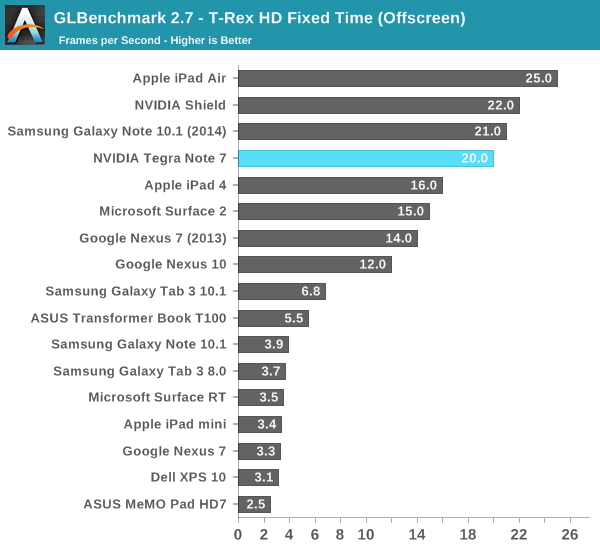
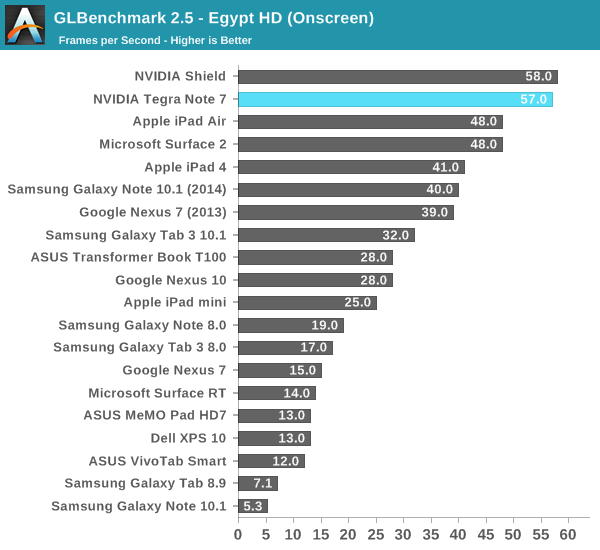
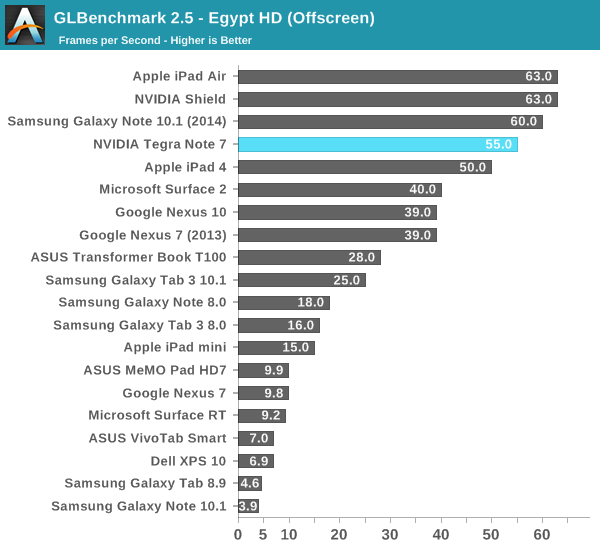
Mostly we see the roughly 10 percent GPU performance delta fleshed out in the compute bound tests. There are a few outliers however, like the 3DMark on-screen tests which can go over 60 FPS on Shield but can’t on Tegra Tab, even in “maximize performance” mode which purports to rescind the app FPS limitation. In the offscreen tests however we see essentially what we’d expect. Tegra 40S obviously does very well compared compared to the Adreno 320 inside APQ8064 in the Nexus 7 (2013) as well. Coupled with a 1280x800 display resolution, I don’t think Tegra Tab is want for more GPU performance at all, it might even be overkill at that resolution for the current suite of games.
NAND Performance
Last up is NAND and storage performance. We’ve been tracking storage performance on these devices for a little while now and have noticed forward progress over the generations.
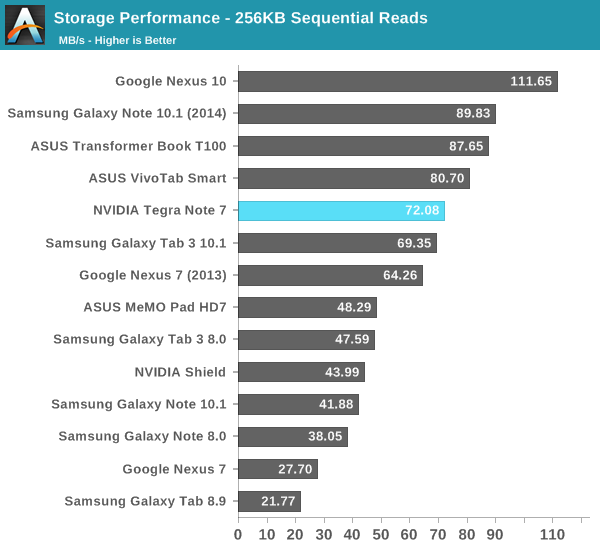

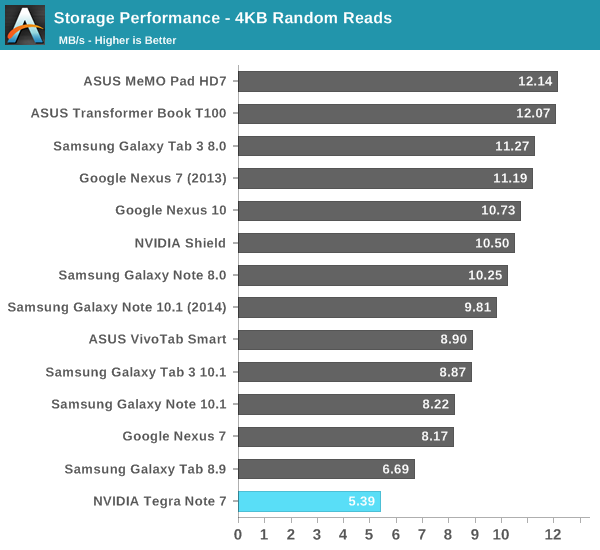
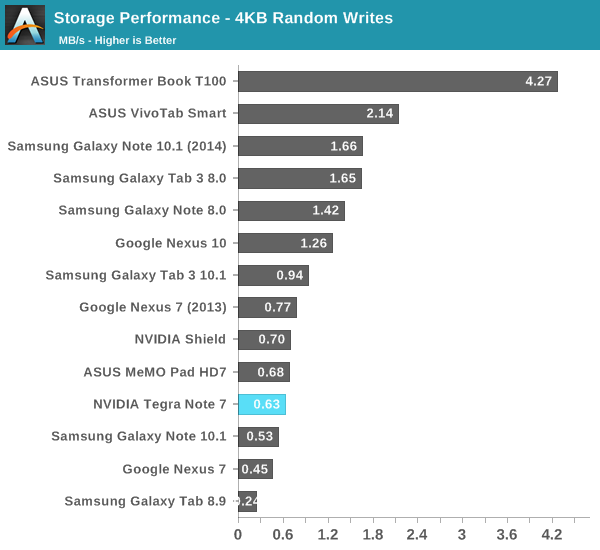
The Tegra Tab starts out strong with relatively fast sequential reads, but then starts falling behind. It’s ahead of the old Nexus 7 in sequential writes, but its random performance suffers. It’s clear that storage performance is one of the areas that took a hit on the Tegra Note. The upside however is that there’s a microSD card in Tegra Note, although SD isn’t exactly going to give an uplift on random read or write speed versus internal storage.


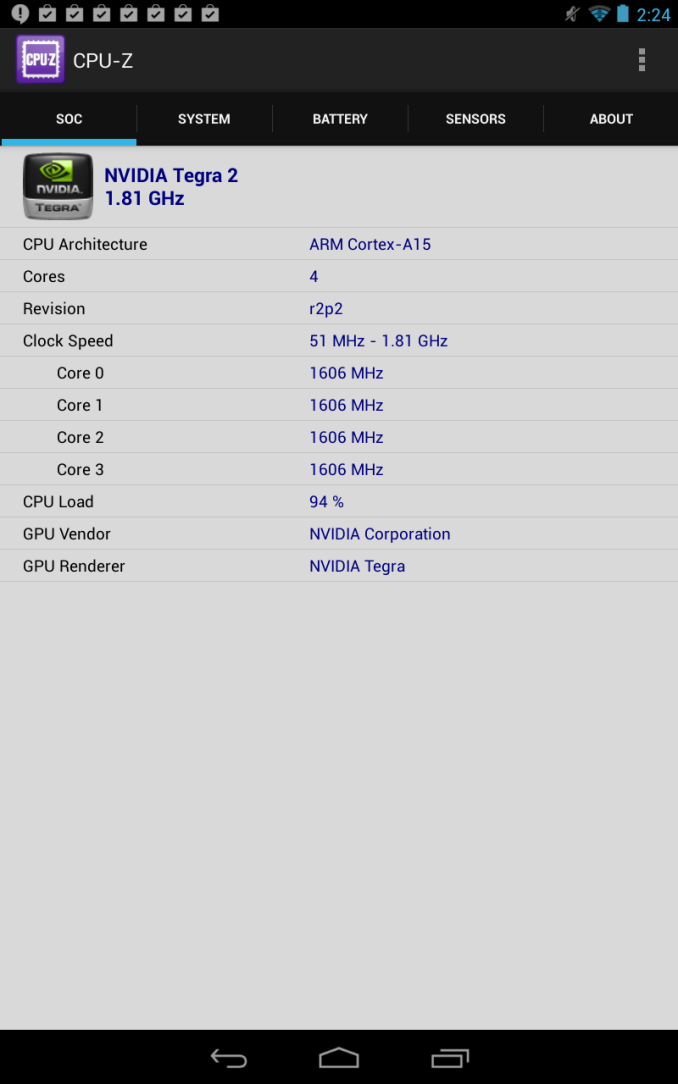
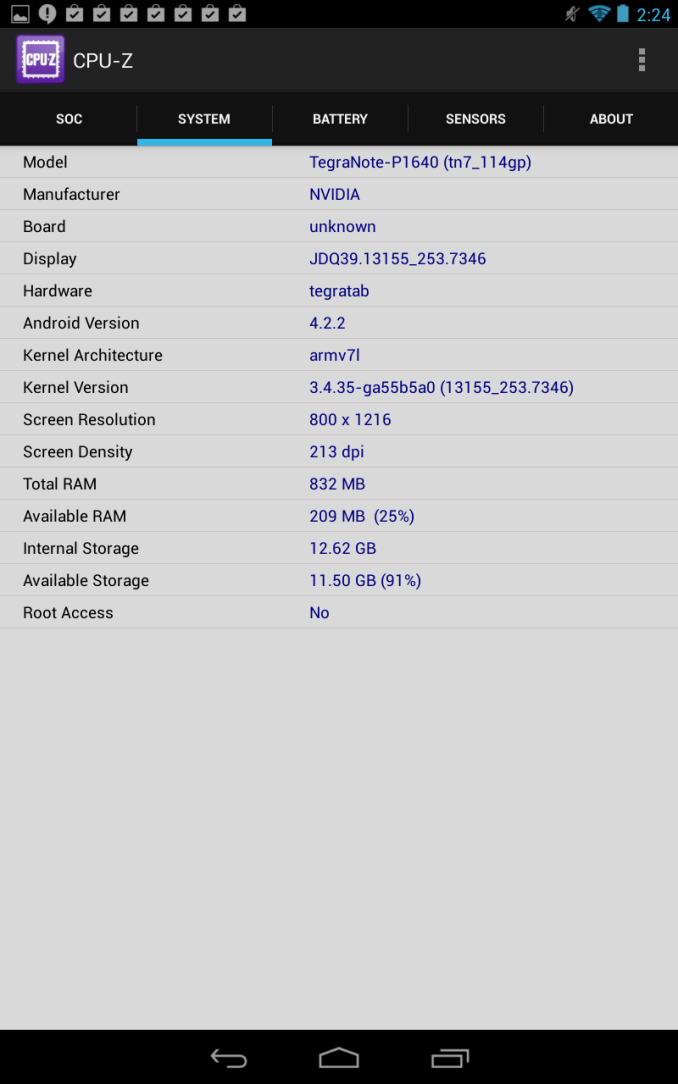
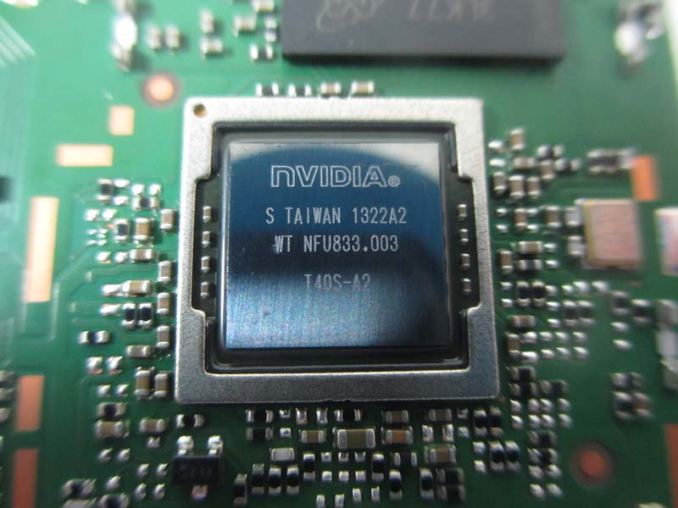








87 Comments
View All Comments
polaco - Tuesday, November 12, 2013 - link
they haven't been able to sell those tegra 4 chips to anyone. Many times those chips don't match the specifications they promise to hardware vendors and thus they have turned their back to NVidia. Now they are desperatly trying to find a market to tegra 4 chips at any cost.BryanC - Tuesday, November 12, 2013 - link
Do you have a source for this? Other than Mr. Demerjian? #sighKrysto - Tuesday, November 12, 2013 - link
I'm hoping for a 10-12" Tegra Note with a Tegra 5 chip and a higher resolution (at least 1920x1200), next year. Too bad Nvidia won't be making any ARMv8 chips next year, though, because I would've also liked that. Making Tegra 5 at 28nm will be pretty disappointing, too, but anyways, just show me a larger tablet with this tech.darwinosx - Tuesday, November 12, 2013 - link
I'd much rather seen an iPad Mini review since people will actually buy and use those unlike this hunk of junk.Raghu - Wednesday, November 13, 2013 - link
Pretty good demo of what its capablehttp://www.youtube.com/watch?v=wtZz4PjcAUk
darkich - Wednesday, November 13, 2013 - link
Why aren't you including the Note 3 in your benchmark charts?Please answer
will2 - Wednesday, November 13, 2013 - link
Brian, as you were understandably comparing the Tegra Note7 against N7.2 and commented on the N7.2 being better in having 2band WiFi, then WHY did you omit the N7.2 Wifi Benchark ? (useful to publish speed v range)Also, I realise the N5 is arguably too small to be considered a tablet, but being a high interest current model, would be very handy to update your tables with N5 benchmarks
Arbie - Wednesday, November 13, 2013 - link
I'm sad to see an Anandtech review distorted by personal preferences. Brian seems determined to deprecate or when possible ignore SD card capabilities. The ability to instantly swap huge amounts of media in and out is obviously important to anyone who seeking such a tablet for watching video. The Tegra 7 has this slot; the Nexus 7 sadly does not. But - this fact doesn't even make it into the concluding list of pros and cons!! Brian reluctantly gives the SD slot half of a disinterested sentence somewhere else, after the pages of fit and finish descriptions he is prone to. This is ludicrously unfair to the Tegra and a disservice to those readers who focus on the conclusions. I would pay $50 EXTRA to have the SD slot, on any tablet. The fact that Brian has no use for it doesn't mean it should be excluded from the review! Who's minding the store here?29a - Wednesday, November 13, 2013 - link
You should review the Sero 7 Pro. Better specs than the 1st Gen Nexus 7 for $50 less.Death666Angel - Thursday, November 14, 2013 - link
Costs exactly the same here in Germany. 170^€ for the 8GB Sero 7 Pro and 165€ for a 16GB Nexus 7 2012. It seems to only have DDR2 RAM (at least the sellers advertise it as such), it lacks some battery power, but it does have miniHDMI and a back camera. Note exactly sure those are better specs.